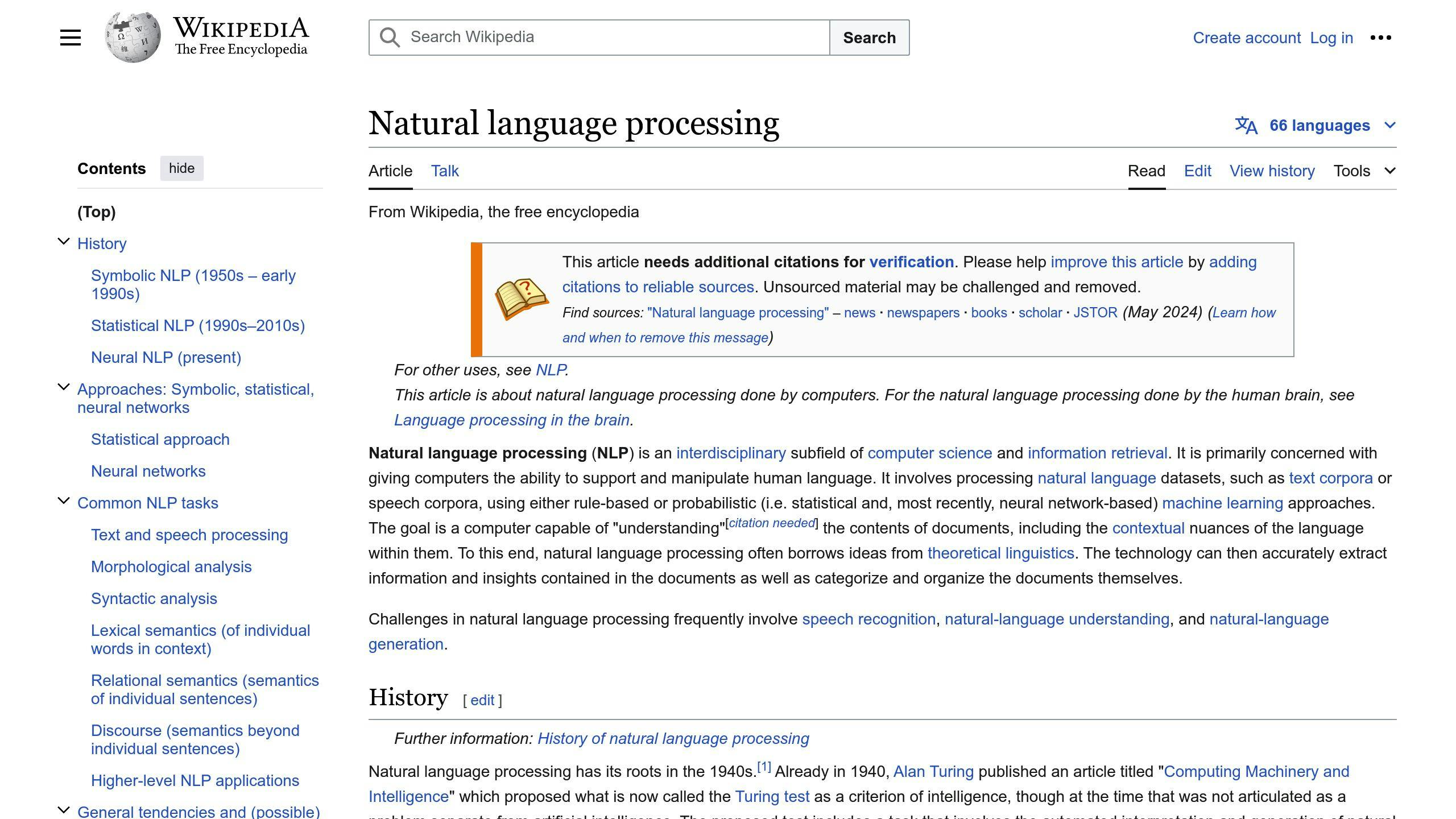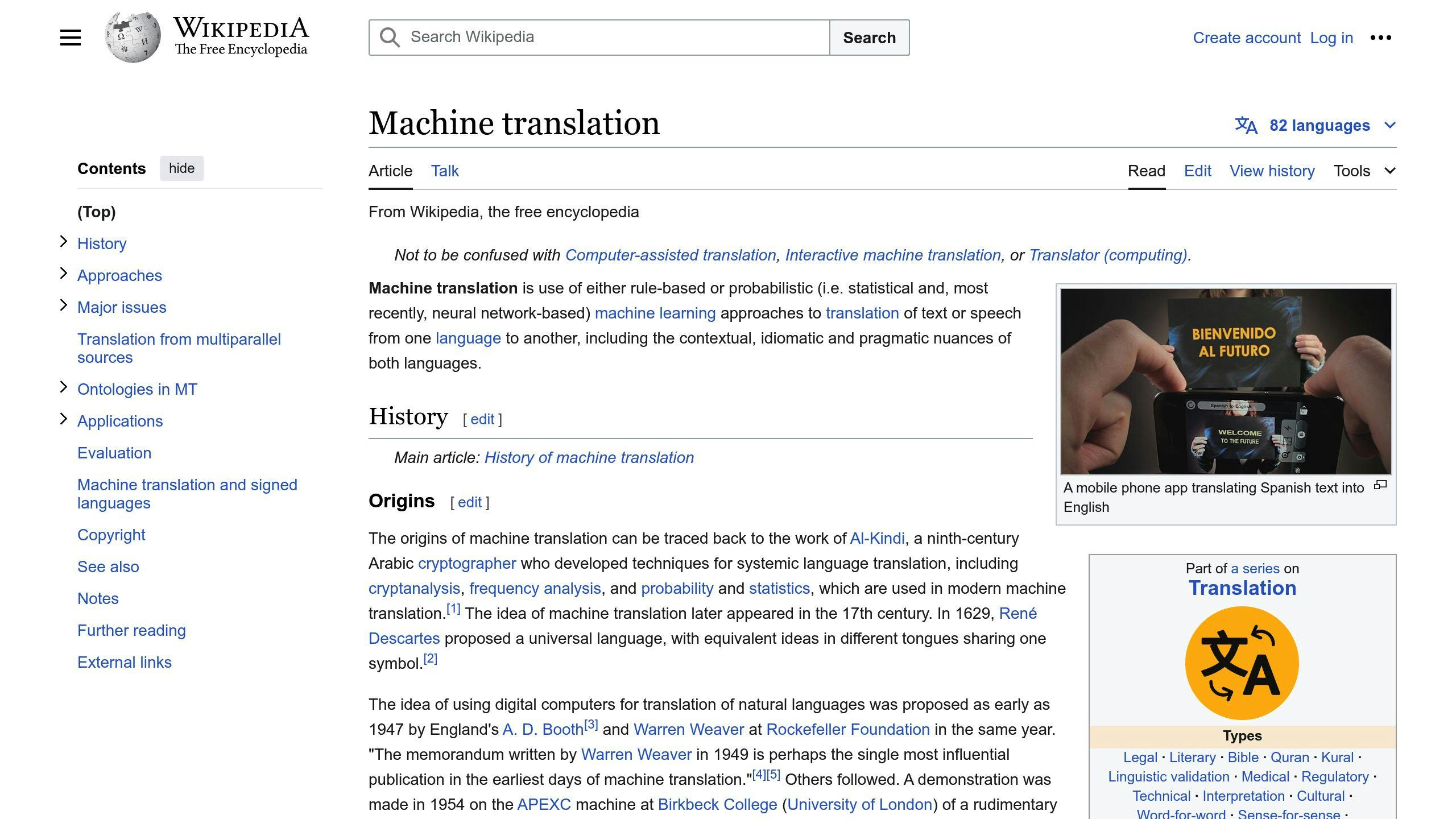Multilingual chatbots enable businesses to provide seamless support to customers worldwide, breaking down language barriers. These AI-powered virtual assistants understand and respond in multiple languages, ensuring every customer feels valued, regardless of their linguistic background.
Key Benefits:
- Provide personalized support in customers' preferred languages
- Facilitate effortless communication, fostering trust and loyalty
- Expand global footprint and tap into new markets
- Deliver prompt, accurate, and culturally-sensitive responses, 24/7
By leveraging multilingual chatbots, companies can enhance customer experiences, gather valuable insights, and unlock new growth opportunities in the global marketplace.
How Multilingual Chatbots Work:
| Step | Process |
|---|---|
| 1 | Customer inputs a message in their native language |
| 2 | Natural Language Processing (NLP) analyzes the intent |
| 3 | Machine Translation translates the input to the chatbot's language |
| 4 | Chatbot generates a response and translates it back to the customer's language |
| 5 | Chatbot provides the response in the customer's native language |
Business Advantages:
| Advantage | Description |
|---|---|
| Improved Customer Engagement | Personalized interactions in users' languages |
| Expanded Market Reach | Access to new markets and demographics |
| Increased Sales and Retention | Enhanced customer experience and trust |
While implementing multilingual chatbots presents challenges like maintaining translation accuracy and managing cultural differences, businesses can overcome these by investing in high-quality translation services, involving cultural experts, and continuously improving the chatbot's performance.
Related video from YouTube
The Problem: Language Barriers in Support
In today's global business landscape, companies are expanding their reach across borders, seeking to tap into new markets and connect with a diverse customer base. However, this expansion often comes with a significant challenge: language barriers.
Miscommunication and Frustration
When customers struggle to express their concerns or inquiries in a language they are not fluent in, it can lead to misunderstandings, frustration, and a failure to resolve their issues effectively. This negatively impacts customer satisfaction and can result in lost sales, damaged reputation, and decreased customer loyalty.
Inconsistent Support and Limited Insights
Language barriers can also hinder businesses from providing consistent and efficient support across their customer base. Companies may allocate disproportionate resources to support customers in specific languages, while neglecting others. This uneven distribution of resources can lead to disparities in the quality of support, creating a fragmented and inconsistent customer experience.
Furthermore, the inability to communicate effectively with customers in their native languages can limit a company's ability to gather valuable feedback and insights. Without a clear understanding of customer needs, preferences, and pain points, businesses may struggle to identify areas for improvement or develop products and services that truly resonate with their target markets.
Consequences of Language Barriers
| Consequence | Impact |
|---|---|
| Miscommunication | Frustration, unresolved issues, diminished customer satisfaction |
| Inconsistent Support | Disparities in quality, fragmented customer experience |
| Limited Customer Insights | Difficulty identifying areas for improvement, misalignment with customer needs |
| Restricted Market Reach | Inability to effectively connect with and serve diverse customer bases |
By addressing these challenges and implementing multilingual support solutions, businesses can unlock new opportunities and position themselves for success in the global marketplace.
The Solution: Benefits of Multilingual Chatbots
Multilingual chatbots offer a solution to the language barriers that businesses face when supporting a diverse, global customer base. By providing immediate and inclusive support in a customer's native language, these AI-powered virtual assistants can bridge communication gaps and enhance the overall customer experience.
Seamless Communication and Improved Satisfaction
Multilingual chatbots allow customers to express themselves in their native language, leading to better understanding and issue resolution. This eliminates the frustration and misunderstandings that often arise when customers struggle to express themselves in a language they are not fluent in.
Consistent and Efficient Support Across Markets
Multilingual chatbots enable businesses to provide consistent and efficient support across diverse customer bases, regardless of language barriers. With a single chatbot solution capable of handling multiple languages, companies can ensure that all customers receive the same high-quality support, fostering a unified and cohesive customer experience.
Valuable Customer Insights and Improved Product Development
By engaging with customers in their native languages, multilingual chatbots can gather valuable insights and feedback that may have been previously inaccessible due to language barriers. These insights can inform product development, marketing strategies, and overall business decisions, ensuring that offerings are tailored to meet the specific needs and preferences of diverse customer segments.
| Benefit | Description |
|---|---|
| Seamless Communication | Customers can express themselves in their native language, leading to better understanding and issue resolution. |
| Improved Satisfaction | Eliminating language barriers enhances the overall customer experience and satisfaction levels. |
| Consistent Support | Multilingual chatbots ensure consistent, high-quality support across diverse customer bases. |
| Efficient Resource Allocation | Companies can optimize their support operations and deliver efficient service across all markets. |
| Valuable Customer Insights | Engaging with customers in their native languages provides valuable insights for product development and business decisions. |
| Competitive Advantage | Tailoring offerings to diverse customer segments can lead to increased customer loyalty and a competitive edge. |
By leveraging the power of multilingual chatbots, businesses can overcome language barriers, foster inclusive communication, and unlock new opportunities for growth and success in the global marketplace.
How Multilingual Chatbots Work
Multilingual chatbots use advanced technologies to understand and respond to customers in their native languages. Two key components make this possible: Natural Language Processing (NLP) and Machine Translation.
Natural Language Processing (NLP)

NLP allows chatbots to understand human language, including syntax, semantics, and pragmatics. This technology identifies the intent behind a customer's message, extracts relevant information, and generates a response that addresses the customer's query or concern.
Machine Translation

Machine Translation enables chatbots to translate customer inputs and responses in real-time. This technology uses algorithms to analyze the source language and generate an accurate translation in the target language.
How NLP and Machine Translation Work Together
Here's how multilingual chatbots process customer interactions:
| Step | Description |
|---|---|
| 1 | Customer inputs a message in their native language. |
| 2 | NLP analyzes the input to identify the intent and extract relevant information. |
| 3 | The chatbot translates the input into the language understood by its knowledge base using Machine Translation. |
| 4 | The chatbot processes the translated input, generates a response, and translates it back into the customer's native language using Machine Translation. |
| 5 | The chatbot provides the response to the customer in their native language. |
By combining NLP and Machine Translation, multilingual chatbots can overcome language barriers, providing customers with a more personalized and efficient support experience. As businesses expand globally, the importance of multilingual chatbots will continue to grow, enabling companies to tap into new markets and foster stronger relationships with customers worldwide.
Business Advantages of Multilingual Chatbots
Integrating multilingual chatbots into your business operations can bring numerous benefits, from improved customer engagement to expanded market reach and increased sales potential.
1. Improved Customer Engagement and Satisfaction
Multilingual chatbots provide a more personalized experience by communicating with customers in their native language, leading to higher satisfaction rates and stronger brand loyalty.
| Advantage | Description |
|---|---|
| Real-Time Support | Instant assistance in users' preferred languages |
| Accessibility | Breaking language barriers ensures a wider reach |
| Personalized Interactions | Tailored responses in users' languages create a more personalized experience |
2. Expanded Market Reach and Global Presence
By catering to multilingual audiences, businesses can tap into new markets and demographics, fostering growth and global expansion.
| Benefit | Description |
|---|---|
| Access to New Markets | Offering support in multiple languages allows businesses to penetrate new regions |
| Increased Sales Opportunities | A broader market reach translates into increased sales opportunities |
| Competitive Advantage | Providing multilingual support sets your brand apart from competitors |
3. Increased Sales and Customer Retention
Multilingual chatbots can positively impact sales and customer retention by enhancing the overall customer experience and building trust.
| Advantage | Description |
|---|---|
| Improved Customer Experience | Seamless communication in users' native languages positively influences purchasing decisions |
| Localized Sales Support | Guiding users through the sales process in their preferred languages improves understanding and trust |
| Customer Loyalty | Resolving queries promptly and efficiently in customers' languages fosters trust and loyalty |
By leveraging multilingual chatbots, businesses can unlock a wealth of advantages, from enhanced customer engagement and satisfaction to expanded market reach and increased sales potential.
sbb-itb-b2c5cf4
Overcoming Implementation Challenges
Implementing multilingual chatbots can be a complex task, and businesses may face several challenges during the process. Two primary obstacles are maintaining translation accuracy and managing cultural differences.
Maintaining Translation Accuracy
One significant challenge is ensuring that translations are accurate and contextually relevant. This requires a deep understanding of language nuances, including idioms and colloquialisms. To overcome this challenge, businesses can:
| Challenge | Solution |
|---|---|
| Inaccurate translations | Invest in high-quality translation services |
| Lack of contextual understanding | Use machine learning algorithms to improve translation accuracy |
| Cultural nuances | Involve human translators to review and refine translations |
Managing Cultural Differences
Another significant challenge is managing cultural differences. What may be acceptable in one culture may be offensive in another, and businesses need to be sensitive to these differences. To overcome this challenge, businesses can:
| Challenge | Solution |
|---|---|
| Cultural insensitivity | Conduct cultural research |
| Lack of cultural understanding | Involve cultural experts in the development process |
| Inappropriate language and tone | Use culturally sensitive language and tone in chatbot interactions |
By understanding these challenges and implementing strategies to overcome them, businesses can develop effective multilingual chatbots that provide accurate and culturally sensitive support to their customers.
Best Practices for Deployment
When deploying a multilingual chatbot, it's crucial to follow best practices to ensure a successful implementation. Here are some guidelines to help you get started:
Set Clear Goals
Before deploying your chatbot, define clear goals and key performance indicators (KPIs) to measure its success. Identify the languages you want to support, the target audience, and the chatbot's primary functions.
Choose the Right Platform
Select a platform that supports multiple languages and has built-in translation capabilities. Consider using cloud-based platforms that offer scalability and flexibility.
Train the Chatbot Effectively
Training a multilingual chatbot requires high-quality data and linguistic expertise. Use data that covers various languages, dialects, and cultural nuances. Involve human translators and cultural experts to review and refine the chatbot's responses.
Continuous Improvement
Continuously monitor and improve your chatbot's performance. Collect feedback from customers, analyze conversation logs, and update the chatbot's language models to ensure accuracy and relevance.
| Best Practice | Description |
|---|---|
| Set clear goals | Define KPIs and target audience to measure success |
| Choose the right platform | Select platforms with built-in translation capabilities |
| Train the chatbot effectively | Use high-quality training data and involve human translators |
| Continuous improvement | Monitor performance, collect feedback, and update language models |
By following these best practices, you can ensure a successful deployment of your multilingual chatbot and provide exceptional customer experiences across languages and cultures.
Success Stories: Multilingual Chatbots in Action
Real-life examples of multilingual chatbots demonstrate their ability to bridge language gaps and enhance customer experiences. Here are a few success stories:
Duolingo: Improving Language Learning
Duolingo, a popular language-learning platform, integrated a multilingual chatbot into its app. The chatbot, available in multiple languages, helps users practice conversational skills with AI-powered language assistants. This feature has significantly improved the learning experience, with users engaging more effectively with the platform.
WestJet: Simplifying Travel Management

WestJet, a Canadian airline, launched a multilingual chatbot named Juliet to assist customers in booking flights and accessing travel information. Available in both English and French, Juliet has streamlined travel management, reducing response times and improving customer satisfaction.
Unilever: Enhancing Employee Experience

Unilever, a multinational consumer goods company, introduced Una, a multilingual chatbot designed to support employees across 106 countries. Una provides HR assistance in 32 languages, breaking down communication barriers and offering a unified employee experience.
These success stories demonstrate the power of multilingual chatbots in enhancing customer experiences, improving operational efficiency, and fostering global connectivity.
| Company | Industry | Multilingual Chatbot Features |
|---|---|---|
| Duolingo | Education | Conversational language practice in multiple languages |
| WestJet | Travel | Flight booking and travel information in English and French |
| Unilever | Consumer Goods | HR assistance in 32 languages across 106 countries |
Conclusion: The Future of Multilingual Support
As businesses expand globally, the need for multilingual customer support will grow. Multilingual chatbots will play a key role in bridging language barriers and delivering personalized experiences to customers worldwide.
The Role of Technology
Advances in natural language processing (NLP) and artificial intelligence (AI) will improve chatbots' ability to understand and respond to diverse languages, dialects, and cultural nuances. This will enable businesses to provide seamless and localized experiences, fostering stronger customer relationships and loyalty.
Integration with Emerging Technologies
The integration of multilingual chatbots with emerging technologies like voice assistants and augmented reality will further enhance the customer experience. Imagine interacting with chatbots through voice commands in your native language or visualizing product information in your preferred language using augmented reality.
Competitive Advantage
Businesses that adopt multilingual chatbots early will gain a competitive advantage. They will be better equipped to cater to diverse customer bases, expand into new markets, and position themselves as industry leaders in customer service and innovation.
Implementation Challenges
However, implementing multilingual chatbots requires a strategic approach. Businesses must invest in continuous training and optimization to ensure accuracy, cultural sensitivity, and data privacy.
The Future of Multilingual Support
In the years to come, multilingual chatbots will become an essential tool for businesses seeking to deliver exceptional customer experiences globally. As technology evolves, the possibilities for multilingual support are endless, and those who embrace this innovation will be well-positioned for success.
FAQs
Can chatbots handle multiple languages?
Yes, multilingual chatbots can handle conversations in multiple languages. They use advanced natural language processing (NLP) and machine translation technologies to understand and respond to queries in different languages accurately.
Here's how it works:
| Language | Chatbot Response |
|---|---|
| Customer's native language | The chatbot detects the language and responds accordingly |
| Multiple languages | The chatbot can dynamically switch between languages based on the customer's preference |
By supporting multiple languages, multilingual chatbots provide a streamlined and personalized support experience for customers worldwide.


